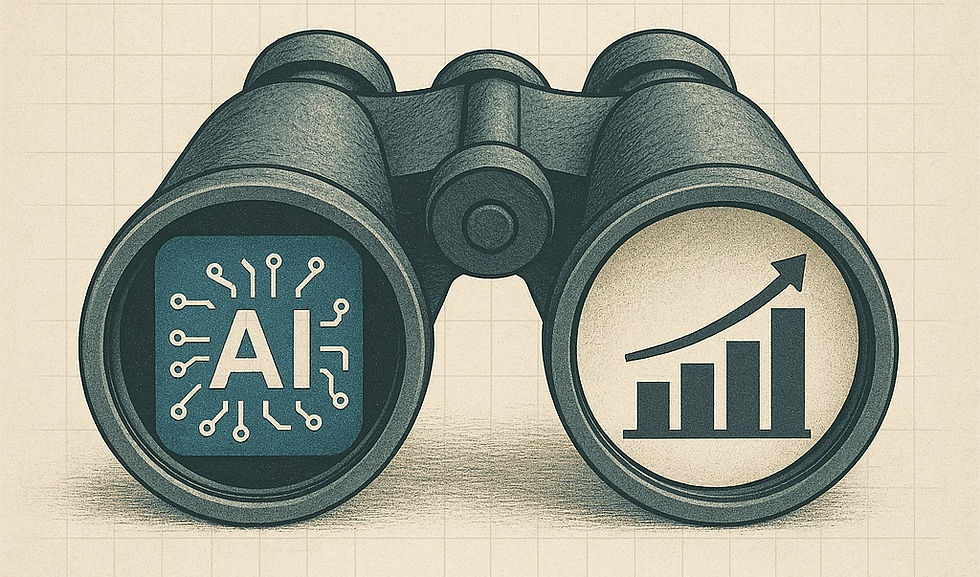Forecasts of the financial management and data analytics
- Catherine Louropoulou
- Sep 12, 2022
- 2 min read
Updated: Oct 14, 2022
An aspect of the job of Financial Departments is to "predict the future". Not of course with the crystal ball method (!) but with other scientific methods. In this task (budgeting, forecasting) they are assisted by systems and methodologies that have more or less been established over the years.
Today, however, a new challenge is in the horizon: With climate change (or crisis) already here, with the need for organized risk management and with the new (and in some cases mandatory) ESG reports requirements - especially in the "E=environment" dimension - the need for long-term projections is arising. The kind that the accounting science and what economists have learned at university or in their professional lives do not help them to deliver.

We know, for example, that a typical accounting system has tools ("reports"?) to visualize forecasts for one, two or three years. It also supports databases which can accept "configuration" parameters of the future. But always with a time horizon of just these few years.
In this article we raise a new issue: How can forecasts of financial data (accounting balances, open receivables balance reports, etc.) be made at ten-year time horizons?
At E-ON INTEGRATION we argue that for each type of economic variable (fixed assets, sales, inventories, etc.), it is possible to identify parameters that can influence their performance in the long term.
After such analysis, the relevant data should be found and loaded into appropriate databases. These databases cannot be the typical business databases (e.g. accounting records, ERP, etc.). They should be data warehouses of a smaller or larger size with the provision and the ability to grow when required but also able to support modern analytical tools. If this is achieved, then data analytics techniques can be used to project views of the future.
Here are some indicative examples of questions to which combinations of existing data with new external databases can provide an answer:
Which of the company's assets are most likely to be damaged in the coming decades due to climate change? For each of them, which climate event affects them the most?
How is the revenue stream distributed geographically and therefore which regions are most likely to cause "damage" to the company's revenue?
How should raw material supplies be structured according to the location of suppliers, who may be subject to different climatic conditions?
What are the costs and how much do they amount to that will have the highest projected increase, so that appropriate mitigation actions can be taken at the right time (not necessarily "now")?
Economists undoubtedly see buzzwords in the above questions ("fixed", "revenue stream", etc.). But we are rather certain that these questions themselves cannot be answered with the tools and data available today!
E-ON INTEGRATION undertakes data analytics projects in the area of climate change where it combines the company’s existing data with external databases in order to provide long-term forecasts for the issues that concern its business. Both data analysts and climate scientists are involved in these so they cannot be labeled and considered purely IT projects. Only some part of them is risk management, ESG reporting and the management of related targets and PI's (performance indicators) and KPI's.




Comments